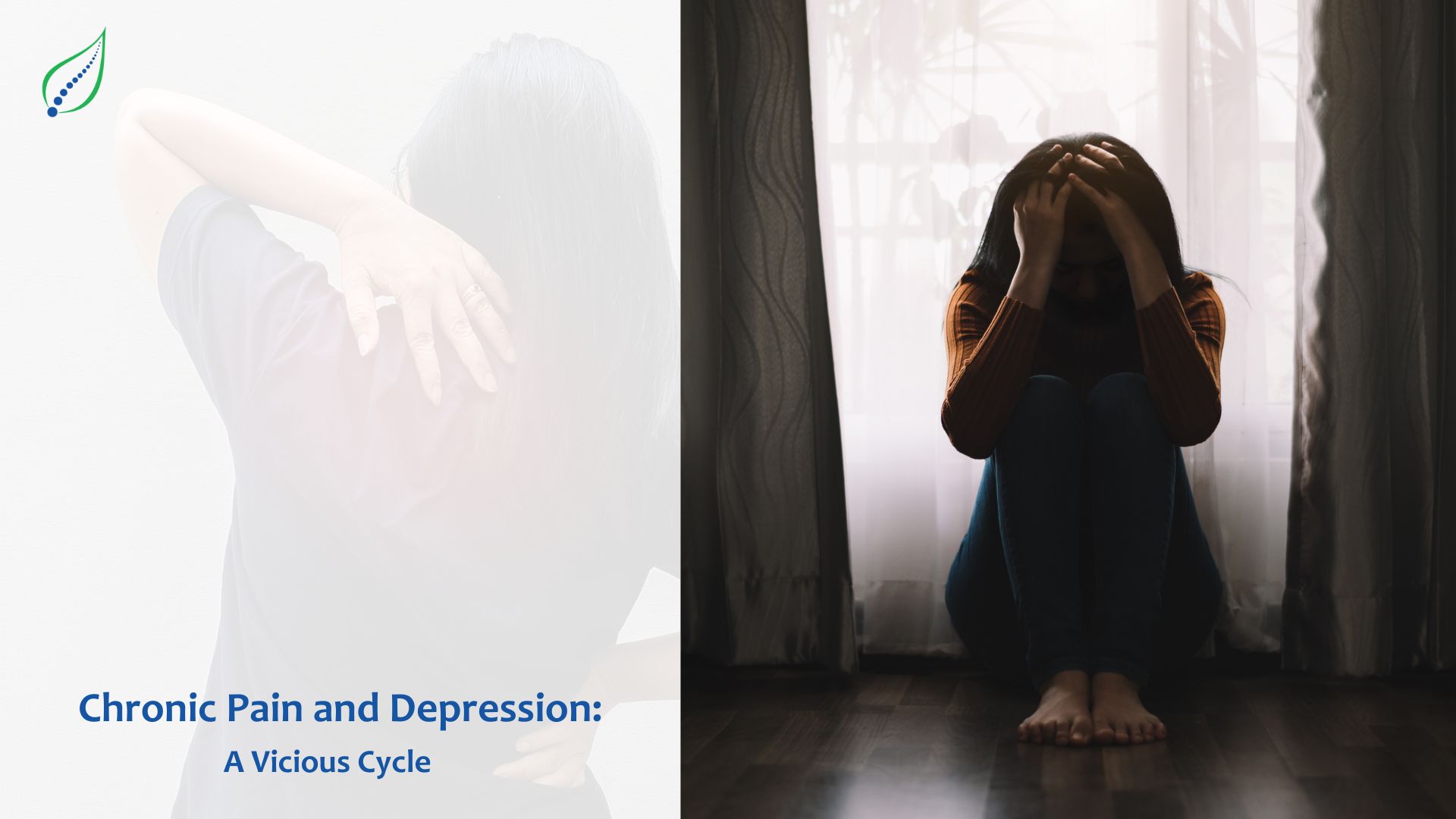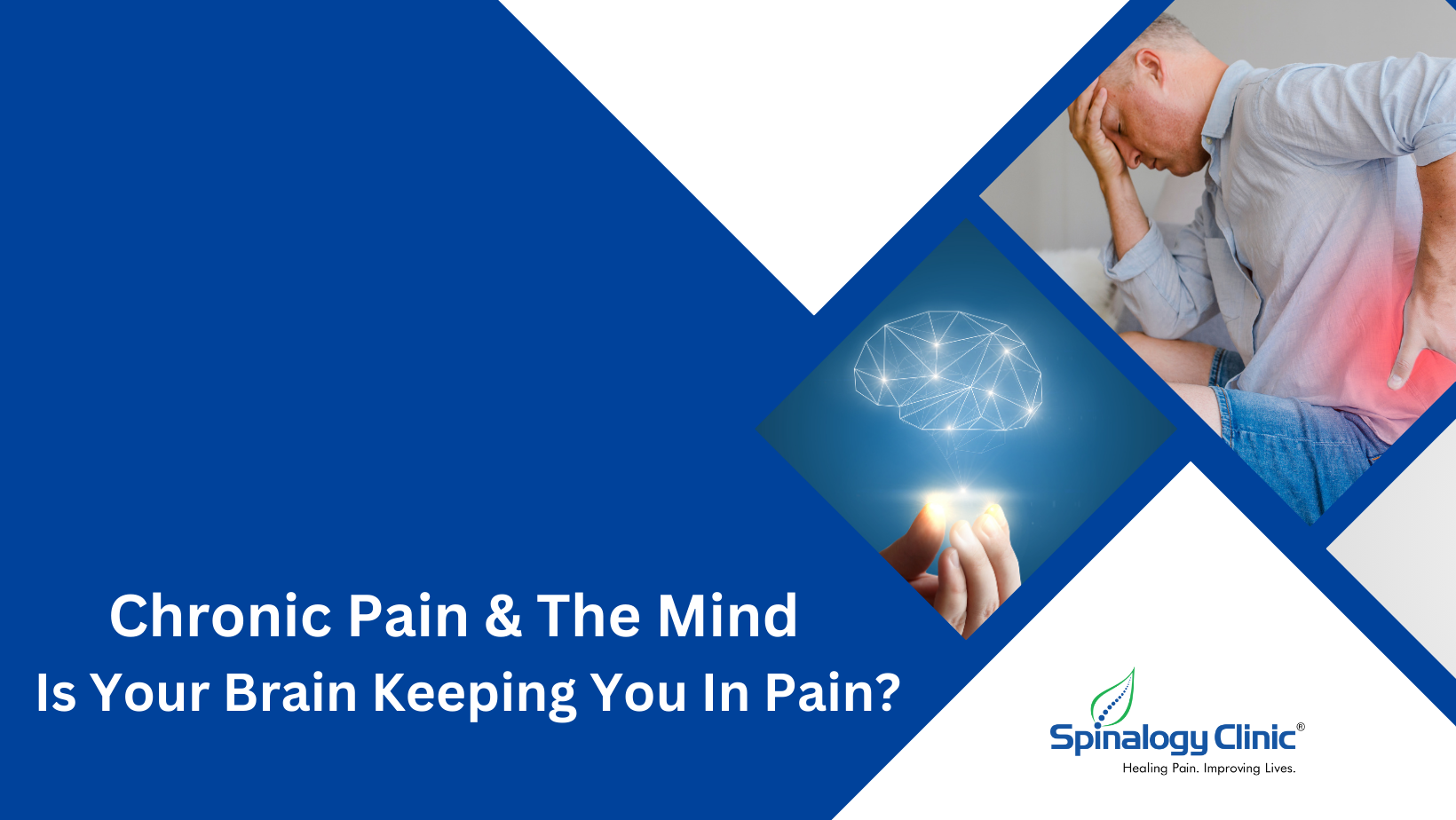Chronic Pain and Depression: A Vicious Cycle
Living with constant pain is a big struggle for many people, and it can severely affect their physical and mental health. When chronic pain gets mixed with depression, the battle becomes even tougher. In this blog post we are going to delve into the intricate connection between long-lasting pain and depressive feelings as well as converse about methods of handling these situations effectively.
Understanding Chronic Pain
Pain that sticks around for a long time and doesn't go away like it normally should from the initial injury or issue is known as chronic pain. Several main features of chronic pain are:
- Elevated stress hormone levels
- Low energy
- Mood disorders
- Muscle pain
- Reduced mental and physical performance
As the years go by, chronic pain might get worse because the body starts to be more responsive towards signals of pain. It can also be experienced in areas that were not originally affected. Frequently, constant pain disturbs sleep and this results in feeling tired during the day and less efficient workwise. The never-ending character of the pain can put stress on relationships and make day-to-day living feel stressful or too much to handle.
The Link Between Chronic Pain and Depression
Among individuals who have chronic pain, depression is the most frequent mental health problem. The statistics are quite remarkable to reflect on:
In 20% to 50% of people suffering from chronic pain, it is accompanied by depression. Depression rates among those with long-lasting pain are four times higher compared to the general population. Almost one-third of patients dealing with chronic pain also report having symptoms related to depression. These numbers are quite striking and highlight the complex relationship between chronic pain and mental health problems.
- 25-50% of patients who report pain to doctors are depressed
- On average, 65% of depressed individuals complain of pain
- Pain that limits independence is linked to higher depression risk
Regrettably, chronic pain patients often have depression that is not identified or treated. When they visit the doctor, their complaints about pain might cover up signs of depression. The result can be a deepening of feelings related to sadness and despair combined with sleep problems, changes in appetite, tiredness as well as lessened physical activity which can make the pain worse.
The Pain-Depression Cycle
Anxiety, irritability, and agitation are emotional responses that pain naturally triggers in every person. Usually, when the pain lessens so does this stress reaction. But for those with chronic pain they might stay in a long-lasting state of tension and stress. Eventually, this ongoing pressure might lead to the emotional problems linked with depression like:
- Depressed mood
- Anger and irritability
- Persistent anxiety
- Disordered thinking
- Low self-esteem
- Family strain
- Fatigue
- Activity avoidance due to fear of injury
- Financial and legal concerns
- Reduced libido and sexual activity
- Insomnia
- Social withdrawal
- Weight changes
- Occupational difficulties
Shared Mechanisms: Depression and Pain
Depression and chronic pain have common neurotransmitters and nerve pathways in the brain and spinal cord. The major life impacts of chronic pain can also lead to depression, especially for people who are prone to it. Losses that often come with chronic pain - like less physical activity, sleep difficulty or not enough social engagement, losing relationships as well as sexual intimacy along with employment opportunities and income all promote depressive symptoms.
Afterwards, depression makes the feeling of pain more intense and reduces capacity to cope with it in a productive way. It becomes harder to remain active and handle stress levels properly. Studies show that individuals dealing with chronic pain who also have depression experience more severe pain, less control over their lives and use less adaptive methods for handling these situations when compared to those without the mental health issue.
Treating Chronic Pain and Depression
Since these two conditions are so closely linked, it's common for chronic pain and depression to be treated together. The most successful method is usually a comprehensive approach that tackles all areas of life affected. The crucial aspects of treatment are:
Antidepressant Medications
Some antidepressants, especially tricyclics such as amitriptyline and nortriptyline, are very helpful in treating neuropathic pain conditions like migraines, herniated disks and problems with the spinal nerves. Fresh types of antidepressants such as serotonin-norepinephrine reuptake inhibitors (SNRIs) offer hope for managing both pain and depression at once; they usually have less side effects too.
Physical Activity
Even though a lot of people with chronic pain don't exercise because they worry about getting hurt more, not moving can make you less fit which means higher chances of pain and injury. It is very important to do exercise that your doctor approves of. Doing physical activity also helps reduce depression by letting out brain chemicals which improve mood.
Empowerment and Engagement
Chronic pain makes a person view themselves as a victim, and it is very important for them to work together with an active doctor so that they can become involved in their own care. This collaboration helps greatly when dealing with the pain and finding ways of getting better.
Cognitive-Behavioral Therapy (CBT)
CBT, which stands for cognitive-behavioral therapy, has shown to be helpful in treating depression and anxiety related to chronic pain. This method helps patients recognize and alter the twisted negative thoughts that frequently come with enduring pain over time. In CBT sessions guided by an expert therapist, people learn tactics to transform unconstructive thoughts and beliefs. This can result in better emotions and handling of the pain itself.
Putting it All Together
To ensure optimal management of chronic pain and depression, it is important to have a comprehensive method under the guidance of a trusted physician who ideally specializes in pain. These are some essential elements of an effective plan:
- Appropriate medication management
- Regular engagement in safe physical activity
- Cognitive-behavioural therapy with a pain-informed therapist
- Empowering patients as active participants in their care
- Tapping into reputable pain management resources
Through an all-inclusive management plan, it becomes feasible to manage the difficulties of chronic pain and depression that happen together. By providing good treatment and assistance, patients can lessen their pain, improve their mood, regain their function and get back involved with cherished individuals along with activities which give them happiness and purpose in life.

_1742973131.png)
_1742634080.png)

